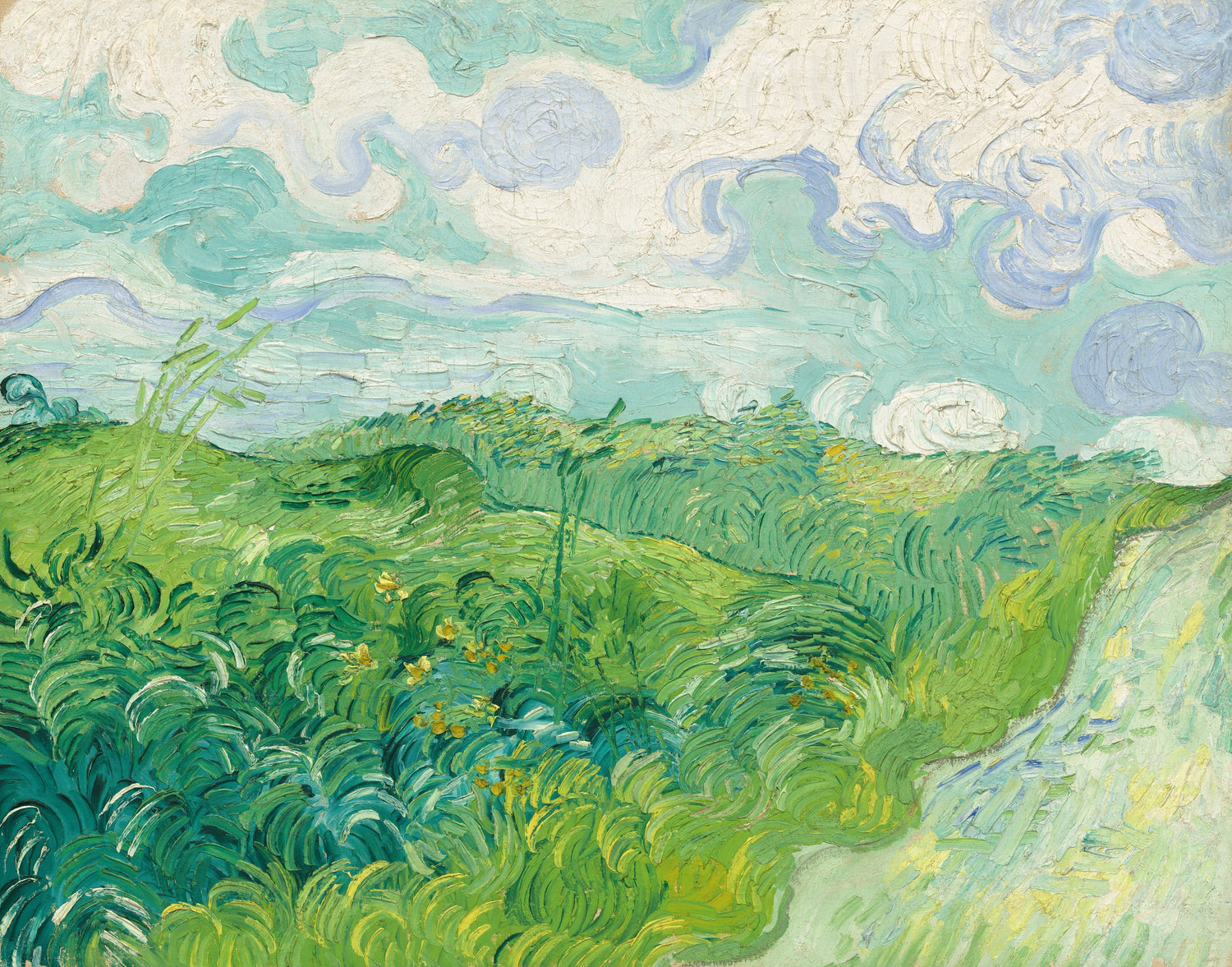
Green Wheat Fields at Auvers, 1890
Vincent van Gogh’s “Green Wheat Fields at Auvers”, painted in 1890, is one of the last masterpieces the Dutch Post-Impressionist created before his untimely death. Completed during his stay in the village of Auvers-sur-Oise in northern France, this landscape painting is a moving portrayal of nature’s beauty and the artist’s emotional state. The canvas captures a lush, windswept wheat field bordered by paths and low rolling hills under a restless sky. The swirling brushstrokes and dynamic lines evoke movement, while the rich palette of greens, blues, and yellows gives the scene vibrancy and depth.
This work reflects Van Gogh’s fascination with the countryside and his deep emotional connection to the natural world. It was painted during a period of intense productivity, where Van Gogh completed more than 70 works in just over two months. The absence of human figures in “Green Wheat Fields at Auvers” highlights a sense of solitude and introspection, with nature taking center stage. The textured application of paint and rhythmic composition are signature elements of Van Gogh’s late style, combining visual intensity with psychological resonance.
Today, “Green Wheat Fields at Auvers” is celebrated not only for its technical brilliance but also for its symbolic weight. It is often interpreted as a meditation on serenity, transition, and the fragile balance between hope and despair—an emotional landscape that mirrors the artist’s final weeks.
